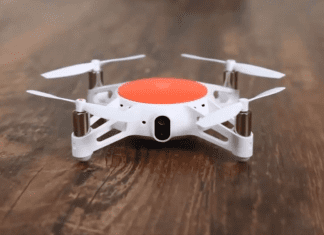Front-end developers face a rapidly evolving industry. Things have changed – and continue to grow. Back in the day, expertise in CSS, HTML, and JavaScript is what you need to excel in front-end web development.
Considering the highly competitive market, the increasing popularity of mobile and web apps, and the rise of digital, front-end developers face various challenges. It is not enough to build the products that the market needs; you also need to be agile. A day of delay in the development process could easily translate to lost opportunities. In an ever-expanding competition, no business can afford such.
Likewise, developers must stay abreast with the needs of the market. Their output should meet the expectations of clients and end-users. The market changes and IT trends directly affect the front-end development. So, what are the differences in front-end development we can expect in 2022?
Here are some of the likely changes front-end developers should watch and prepare for.
JavaScript Remains the Most Popular
This one is quite obvious (and not surprising). JavaScript will continue to dominate front-end development as the most widely used coding language. With its comprehensive frameworks and libraries, developers can easily find what they need. React and Angular Js frameworks are among the most commonly used in front-end development.
Web Components
According to Entrance, bespoke software development experts, storing and reusing code can make coding a lot easier. This flexibility is the reason why Web Components are fast gaining popularity. Web Components allow developers to create ‘custom, reusable HTML elements.’ These components encapsulate functionality and are used in web apps. Web Components use existing web standards; hence they can run anywhere, across all browsers and JavaScript-supported frameworks or libraries.
You’ll be using web components in many applications and tools. Web components can be replicated and utilized instantly in whatever tech stack you upgrade. With its ease of use and portability, web components provide web development teams the flexibility to choose a framework for their front-end development projects.
AI-Based Chatbots
An exciting trend that will greatly impact front-end development, AI-powered chatbots aim to enhance customer experience. AI chatbots are powerful tools that improve customer interaction. Incorporating this technology in future development projects can add a “human” tough in customer interaction that fosters long-term relationships.
Front-end developers need to appreciate the power of AI-based chatbots. They can recognize human speech and talk to users like real humans. This can have a tremendous impact on front-end trends this 2022.
Single-Page Websites
Expect one-pagers to be a popular trend in front-end development this 2022. Single-page websites have numerous advantages – faster, cheaper, and more effective. These pages simplify navigation while allowing users to search through tons of content. Users can easily scroll through the page with just one page to visit. Likewise, these websites are mobile-friendly compared to conventional websites. And considering the growing preference for mobile internet access, it bodes well to the developers.
No Code
One of the pros of custom software development is building low-code applications. But this will change in 2022 as “No Code” becomes the new norm. Soon, it will be possible to design, create, launch, and use digital solutions with No Code. Many front-end developers are now exploring ways to make website applications, digital products, desktop applications, and mobile applications without writing code.
No-code platforms like EditorX and Webflow will dominate the development landscape in 2022. The pre-configured drag and drop blocks allow developers to build powerful applications.
Progressive Web Applications (PWAs)
We can also expect Progressive Web Applications (PWAs) to gain popularity in front-end development. PWAs give users a native app experience right through the browser. These web apps require a limited size but provide an almost similar experience with native apps. Usually, PWAs are utilized as beta versions less than 1 MB in size. PWAs use manifests, service workers, and other web features alongside progressive enhancements that provide a native app experience.
As front-end development evolves, developers need to stay updated with these advancements. This year we can expect many changes that will revamp the landscape. New trends and technologies will surely affect your front-end development process – and you have to be ready to maximize them.













